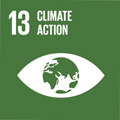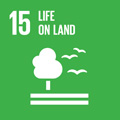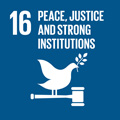- Docente: Roberto Pasini
- Credits: 6
- SSD: ICAR/15
- Language: English
- Teaching Mode: In-person learning (entirely or partially)
- Campus: Ravenna
- Corso: Second cycle degree programme (LM) in International Cooperation on Human Rights and Intercultural Heritage (cod. 9237)
-
from Mar 17, 2025 to Apr 16, 2025
Learning outcomes
Human events accumulate over time upon a locale, grounding forms characterized by permanence and variability. There emerges the city, at the confluence of nature and artifice. The city stands in its urban facts, made up by architecture and collective memory and kept together by an identitarian mythology of the origins. The urban space is the city’s principal structure: both the platform and product of a regime of social, political, and economic processes, where individual instances negotiate a general order. By the end of the course, the student can: read the urban space system in its parts and their relationships; explain its forms as a function of the societal regimes that produced it and retrace its historical evolution; assess its functional value in the present and its testimonial relevance as part of the cultural heritage of a society; form his/her stance about the opportunity of conserving or transforming the ensemble or its parts in the service of present needs.
Course contents
Course contents:
While reviewing the genesis and evolution of cities since their primordial emergence in different areas of the planet until the advent of the metropolises of Modernity, the course focuses on the concurrent evolution of the notion of urban space in a global perspective. Basic methodologies of analysis of the urban systems are presented availing figurative sources, favoring the situated evaluation of the cultural values of urban ensembles and the consequent advisability of conservation or transformation actions in the present and for the future. The general review is accompanied by the illustration of specific cases. Toward the end of the course, the students are invited to analyze, in groups or individually, simple cases of their choice by applying the methodologies previously learnt.
Urban Space:
The city has been described as the ‘work of art par excellence’, denoting the most artful and characteristic creation of humankind on Earth. The city, the ubiquitous paradigm of concentrated urbanity, has colonized the planet for millennia through phases of apotheosis and decadence, until the recent crisis brought forth by the geographic expansion of diffuse settlements. Scores of traditional urban systems, either art works, ordinary structures, or obsolescing relics, are disseminated around the world awaiting an uncertain redemption. By ‘urban space’, we refer to the armature of publicly usable portions of space that supports the social interplay.
Memory, Myth, Identity:
A topographic context is populated by eventful occurrences. A set of physical transformations, intentional or occasional, entail recognizable forms consolidating some degree of permanence. A more systematic plan of collective relevance integrates primordial configurations pursuing functional or ideal arrangements of space. By incorporating forms of a certain monumentality, a dull fabric retains material memory and articulates its narrative, that is, a myth linking its origins and its possible future. There emerge collective identity and shared values. The historical analysis of the morphological text of a settlement can reconstruct the forces and processes that generated it and, by that, decipher its inherent reasons and legible meanings, as collective aspirations embedded in it.
Approach:
Through lectures, class discussion/debates, and seminar-format sessions, the course offers tools for analyzing over time the forms of the city, its urban-space systems in relation to its social regimes, and evaluating the testimonial and cultural values in the present to orient future actions.
Readings/Bibliography
Bibliography for attending students:
-
K. Lynch (1960) 'The Image of the Environment' + 'The City Image and its Elements', in: The Image of the City, MIT Press, pp. 1-13, 46-49
-
S. Kostof (2004) [Thames and Hudson 1991] 'The Evolution of Organic Patterns' + 'The Grid, Preamble', in: The City Shaped: Urban Patterns and Meanings Through History, Bulfinch Press, pp. 52-69, 94-103 (borrow online at: https://archive.org/details/cityshapedurbanp0000kost)
-
D. Harvey (2012) 'The Right to the City', in: Rebel Cities: From the Right to the City to the Urban Revolution, Verso, pp. 3-25
- P.G. Rowe (2022) 'China within a Geography of Thought', in: Chinese Modern. Episodes Backward and Foreward in Time, Birkhäuser, pp.10-23
Additional bibliography FOR NON-ATTENDING STUDENTS:
- S. Kostof (1991) The City Shaped: Urban Patterns and Meanings Through History, Bulfinch Press [full book]
Bibliographic suggestions if interested (NOT REQUIRED):
-
P. Eisenman (1982) 'Editor's Introduction', in: Aldo Rossi [1966] The Architecture of the City, MIT Press, pp. 3-11
-
R. Koolhaas (1978) 'Prehistory' + 'Coney Island: The Technology of the Fantastic' + 'Definitive Instability: The Downtown Athletic Club', in: Delirious New York. A Retroactive Manifesto for Manhattan, Monacelli Press, pp. 13-29, 29-80, 152-159
Teaching methods
The class sessions will take different formats. Regular sessions will be subdivided in two lectures supported by projections, each followed by class discussion/debate. Seminar sessions will be organized according to active and collaborative learning dynamics. Students will work in group or individually on specific activities to then present and discuss the results with the rest of the class. Special sessions will be devoted to site visits of significant urban ensembles (in the absence of circumstantial impediments), others will host invited experts contributing on specific themes.
Short preparatory readings will be assigned to favor critical interaction in seminar sessions. The calendar released at the beginning of the course will report format of sessions and preparatory readings.
Please, be aware that in the I-Contact program the use of generative artificial intelligence for the creation of papers is considered a form of plagiarism.
Assessment methods
The ability of the student to achieve a coherent and comprehensive understanding of the topics addressed by the course, to critically assess them and to use an appropriate language will be evaluated with the highest grades (A = 27-30 con lode). A predominantly mnemonic acquisition of the course's contents together with gaps and deficiencies in terms of language, critical and/or logical skills will result in grades ranging from good (B = 24-26) to satisfactory (C = 21-23). A low level of knowledge of the course’s contents together with gaps and deficiencies in terms of language, critical and/or logical skills will be considered as ‘barely passing' (D = 18-20) or result in a fail grading (E).
Teaching tools
Projections illustrating written, cartographic, photographic sources, general, additional, and specific bibliographies, digital and printed didactic material.
Students with a form of different ability or specific learning disabilities (DSA) who are requesting academic adjustments or compensatory tools are invited to communicate their needs to the teaching staff in order to properly address them and agree on the appropriate measures with the competent bodies.
Office hours
See the website of Roberto Pasini
SDGs




This teaching activity contributes to the achievement of the Sustainable Development Goals of the UN 2030 Agenda.
